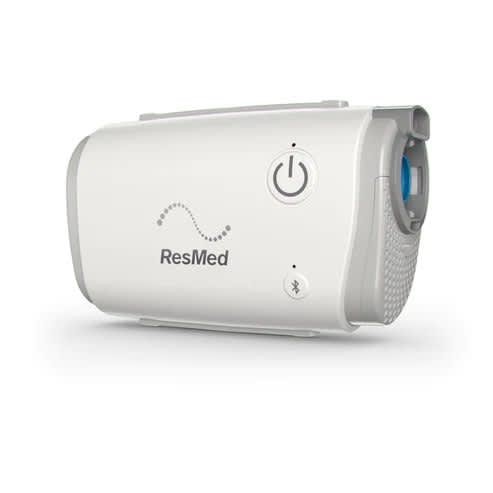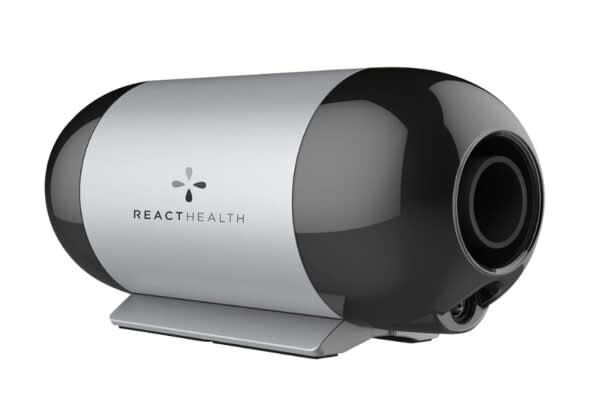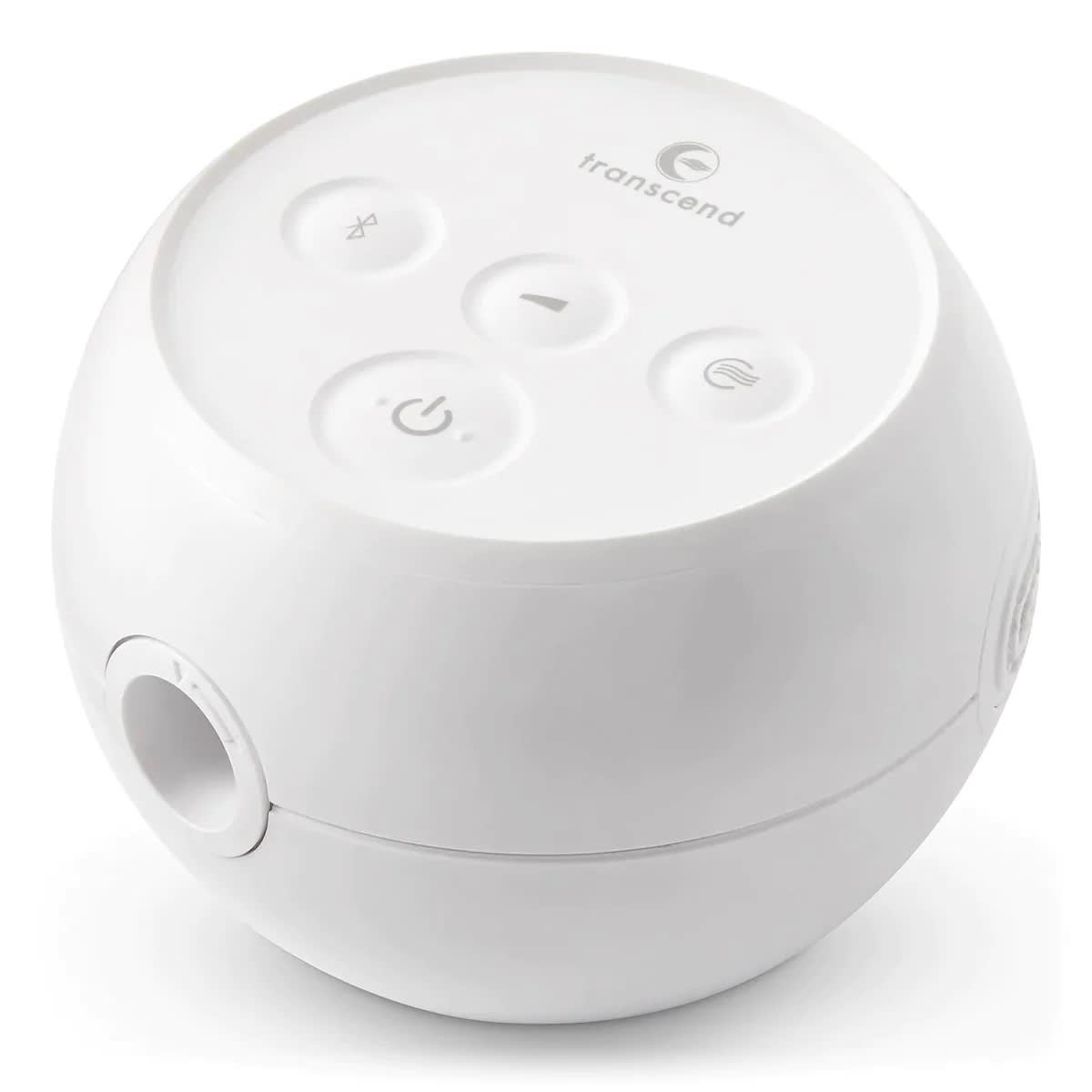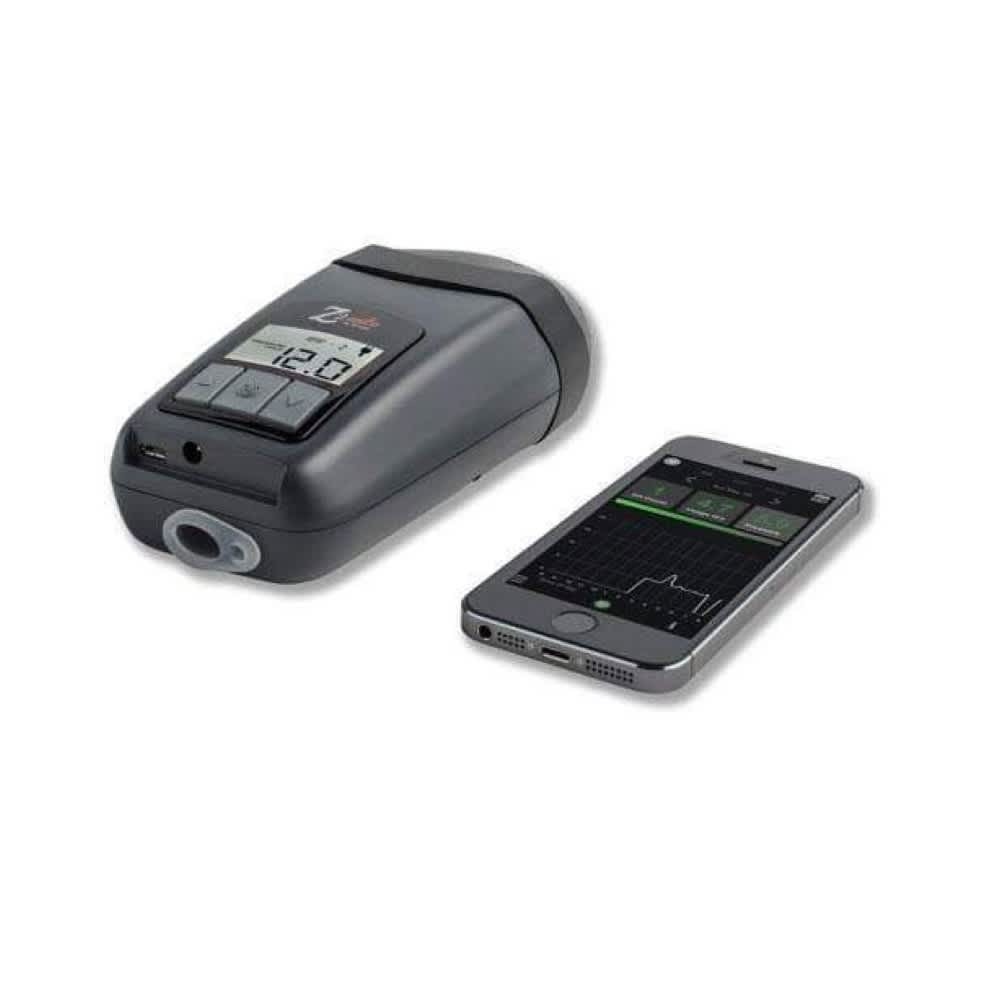Navigating Vietnam with sleep apnea doesn’t have to be a challenge. A Cpap Travel Machine offers a convenient solution, allowing you to maintain your sleep therapy while exploring the beauty of Vietnam. SIXT.VN understands the importance of restful sleep during your travels and offers tailored advice to ensure your journey is both enjoyable and healthy.
Whether you’re drawn to the bustling streets of Hanoi or the serene landscapes of Ha Long Bay, a travel CPAP machine can be your reliable companion. Let SIXT.VN assist you in finding the ideal travel CPAP and provide seamless travel experiences, including convenient airport transfers and comfortable hotel bookings.
1. What is a CPAP Travel Machine and Why Do You Need One?
A CPAP (Continuous Positive Airway Pressure) travel machine is a smaller, more portable version of a standard CPAP machine, designed for individuals with sleep apnea who need to maintain their therapy while traveling. According to the National Sleep Foundation, sleep apnea affects millions of adults, and consistent CPAP use is vital for their health.
1.1. Benefits of Using a CPAP Travel Machine
Using a CPAP travel machine ensures uninterrupted sleep therapy, leading to improved health and well-being during your travels. Here are some key benefits:
- Portability: Compact and lightweight designs make them easy to pack and carry.
- Convenience: Allows you to maintain your sleep therapy routine, regardless of location.
- Health: Ensures consistent treatment of sleep apnea, preventing health complications.
- Comfort: Improves sleep quality, reducing fatigue and enhancing your travel experience.
1.2. Who Should Consider a CPAP Travel Machine?
A CPAP travel machine is essential for anyone diagnosed with sleep apnea who travels frequently. This includes:
- Frequent Flyers: Those who travel by air regularly.
- Business Travelers: Individuals who need to stay alert and refreshed for work.
- Adventure Seekers: Campers, hikers, and travelers to remote areas.
- Anyone Prioritizing Health: People who want to maintain consistent sleep apnea therapy.
2. What Should You Look for in a CPAP Travel Machine?
Choosing the right CPAP travel machine involves considering several factors to ensure it meets your specific needs and travel requirements.
2.1. Size and Weight
The most crucial aspect of a CPAP travel machine is its size and weight. Look for models that are compact and lightweight for easy packing.
| Feature | Benefit | Example Models |
|---|---|---|
| Compact Size | Fits easily into a carry-on bag or backpack | ResMed AirMini, Transcend Micro Auto-CPAP |
| Lightweight | Doesn’t add significant weight to your luggage | Breas Z2 Auto Travel CPAP |
2.2. Battery Life and Power Options
Consider the battery life and power options, especially if you plan to travel to areas with limited access to electricity.
| Feature | Benefit | Example Models |
|---|---|---|
| Rechargeable Battery | Allows use in areas without power outlets | Transcend Micro, Breas Z2 Auto CPAP |
| Universal Voltage | Compatible with different voltage standards in various countries, essential for international travel | ResMed AirMini, Breas Z2 Auto CPAP |
2.3. Humidification
Humidification is crucial for preventing dryness and discomfort during CPAP therapy. Decide whether you prefer a waterless system or a compact humidifier.
| Feature | Benefit | Example Models |
|---|---|---|
| Waterless Humidifier | Reduces bulk and complexity, ideal for travel | ResMed AirMini |
| Integrated Humidifier | Provides moisture to prevent dryness, enhancing comfort | Luna TravelPAP |
2.4. Noise Level
A quiet machine ensures that you and your travel companions can sleep peacefully. Look for models with low decibel levels.
| Feature | Benefit | Example Models |
|---|---|---|
| Low Noise | Ensures a peaceful sleep environment, minimizing disturbance | Breas Z2 Auto Travel CPAP |
| Whisper-Quiet | Operates at a noise level that is barely audible | Transcend Micro Auto-CPAP |
2.5. Compliance with FAA Regulations
Ensure that the CPAP machine is FAA-approved for use on airplanes. This is crucial for maintaining therapy during flights.
| Feature | Benefit | Example Models |
|---|---|---|
| FAA Approved | Allows you to use the device during flights, ensuring consistent therapy | ResMed AirMini, Luna TravelPAP, Transcend Micro |
3. Top CPAP Travel Machines Available Today
Here are some of the best CPAP travel machines available on the market, each offering unique features and benefits.
3.1. ResMed AirMini
The ResMed AirMini is known for its compact size and robust features, making it a top choice for travelers.
- Key Features:
- Waterless humidification
- Ramping function for comfort
- Compliance tracking via a mobile app
- Compatible with various ResMed masks
- Pros:
- Extremely portable
- User-friendly app
- Effective humidification without water
- Cons:
- Requires specific ResMed masks and tubing
- Higher price point
- Ideal For: Frequent travelers who want a compact and feature-rich device.
 ResMed AirMini CPAP travel machine, compact and feature-rich
ResMed AirMini CPAP travel machine, compact and feature-rich
3.2. Luna TravelPAP
The Luna TravelPAP offers a balance of functionality and convenience, making it suitable for various travel scenarios.
- Key Features:
- FAA-approved for in-flight use
- LightTrip companion app for sleep data
- Ramp mode for gradual pressure increase
- Altitude adjustment up to 7,500 feet
- Pros:
- User-friendly interface
- Helpful companion app
- Compact and lightweight
- Cons:
- No integrated humidifier
- Fixed pressure settings only
- Ideal For: Travelers who need a reliable and straightforward CPAP device with altitude adjustment.
 Luna TravelPAP CPAP machine with helpful LightTrip app for sleep data
Luna TravelPAP CPAP machine with helpful LightTrip app for sleep data
3.3. Transcend Micro Travel Auto-CPAP
The Transcend Micro is one of the smallest and lightest CPAP machines available, perfect for travelers who prioritize minimal packing.
- Key Features:
- Extremely compact and lightweight
- GentleRise feature for gradual pressure increase
- Auto-adjusting AirRelief for comfortable exhalation
- Optional rechargeable battery
- Pros:
- Ultra-portable
- Compatible with any mask
- Quiet operation
- Cons:
- Limited advanced features
- Small size may not appeal to all users
- Ideal For: Travelers who need the smallest and lightest possible CPAP device.
 Transcend Micro Travel Auto-CPAP, a compact and lightweight CPAP machine
Transcend Micro Travel Auto-CPAP, a compact and lightweight CPAP machine
3.4. Breas Z2 Auto Travel CPAP
The Breas Z2 Auto CPAP offers a combination of CPAP and APAP modes, making it versatile for different sleep needs.
- Key Features:
- CPAP and APAP modes
- Auto Start/Stop function
- Optional rechargeable battery
- Qlite technology for quiet operation
- Pros:
- Versatile with multiple modes
- Compatible with most masks and tubing
- Quiet operation
- Cons:
- Humidification system requires separate accessories
- Fewer advanced features compared to some models
- Ideal For: Travelers who want a versatile CPAP device with both CPAP and APAP modes.
 Breas Z2 Auto Travel CPAP, versatile with CPAP and APAP modes
Breas Z2 Auto Travel CPAP, versatile with CPAP and APAP modes
4. How to Travel with Your CPAP Machine in Vietnam
Traveling with a CPAP machine in Vietnam requires careful planning and preparation to ensure a smooth and hassle-free experience.
4.1. Pre-Travel Checklist
Before you embark on your trip to Vietnam, make sure you have everything in order.
- Prescription: Carry a copy of your CPAP prescription.
- FAA Approval: Verify that your CPAP machine is FAA-approved for air travel.
- Power Adapter: Ensure you have the correct power adapter for Vietnamese outlets (220V, 50Hz, Type A, and Type C).
- Distilled Water: Plan to purchase distilled water upon arrival for humidification, if needed.
- Cleaning Supplies: Pack your CPAP cleaning supplies, such as wipes and distilled water.
- Contact Information: Keep contact information for your sleep specialist and CPAP supplier handy.
4.2. Getting Through Airport Security
Navigating airport security with a CPAP machine can be straightforward if you are prepared.
- Inform TSA: Notify TSA agents that you have a CPAP machine.
- Documentation: Present your prescription and a letter from your doctor if possible.
- Carry-On: Always carry your CPAP machine as carry-on luggage to prevent loss or damage.
- Separate Bag: According to FAA regulations, CPAP machines can be carried in a separate bag that does not count towards your carry-on limit.
- Inspection: Be prepared for the machine to undergo inspection; TSA may swab it for explosives.
- Empty Humidifier: Ensure the humidifier chamber is completely empty to avoid spills.
4.3. Using Your CPAP Machine on the Plane
Using your CPAP machine during a flight can significantly improve your comfort and health.
- Airline Notification: Contact your airline in advance to inform them of your intention to use a CPAP machine on board.
- Power Source: Inquire about the availability of power outlets. Some airlines provide them, but it’s not guaranteed.
- Battery Option: Consider using a CPAP machine with a battery or bringing an external battery pack.
- Comfort: Use a comfortable mask and adjust the settings to ensure optimal therapy during the flight.
4.4. Adapting to Local Conditions in Vietnam
Vietnam’s climate and environment can affect your CPAP therapy, so it’s essential to adapt accordingly.
- Humidity: Vietnam’s high humidity can impact the effectiveness of your CPAP machine. Adjust humidification settings to prevent condensation in the tubing and mask.
- Air Quality: In urban areas, air quality can be poor. Regularly clean your CPAP equipment to prevent the buildup of pollutants.
- Altitude: If traveling to mountainous regions like Sapa or Dalat, your CPAP machine may need altitude adjustment. Some machines do this automatically.
- Power Outages: Power outages can occur in some areas. Ensure you have a backup power source, such as a battery pack, to maintain therapy.
4.5. Recommended Hotels and Accommodations
When booking accommodations in Vietnam, prioritize hotels that cater to CPAP users.
- Reliable Power Supply: Choose hotels with a reliable power supply to ensure consistent CPAP use.
- Distilled Water Availability: Inquire whether the hotel can provide distilled water for your humidifier.
- Quiet Rooms: Request a quiet room away from street noise to enhance your sleep quality.
5. Overcoming Common Challenges While Traveling with a CPAP Machine
Traveling with a CPAP machine can present unique challenges, but with the right strategies, you can overcome them.
5.1. Dealing with Power Outages
Power outages can disrupt your CPAP therapy. Here’s how to manage them:
- Battery Backup: Invest in a CPAP battery backup that can power your device for at least one night.
- Power Bank: Carry a portable power bank that can charge your CPAP battery.
- Hotel Generators: Inquire if your hotel has a backup generator to ensure continuous power.
5.2. Maintaining Hygiene
Keeping your CPAP equipment clean is essential to prevent infections.
- Daily Cleaning: Clean your mask and tubing daily with CPAP wipes or mild soap and water.
- Distilled Water: Use only distilled water in your humidifier to prevent mineral buildup.
- Filter Replacement: Replace filters regularly according to the manufacturer’s instructions.
- Sanitizing Device: Consider using a CPAP sanitizing device for thorough cleaning.
5.3. Addressing Comfort Issues
Comfort is key to successful CPAP therapy.
- Mask Fit: Ensure your mask fits properly to prevent leaks and discomfort.
- Humidity Adjustment: Adjust the humidity settings to prevent dryness or condensation.
- Ramp Feature: Use the ramp feature to gradually increase air pressure, making it easier to fall asleep.
- Chinstrap: Use a chinstrap to keep your mouth closed and prevent air leaks.
5.4. Handling Cultural Differences
Be mindful of cultural differences when discussing your CPAP therapy in Vietnam.
- Privacy: Some people may be curious about your CPAP machine, so be prepared to explain its purpose discreetly.
- Language Barrier: Learn a few basic phrases in Vietnamese to communicate your needs, such as “I need distilled water” or “Is there a power outlet available?”
- Respect: Respect local customs and traditions regarding health and privacy.
6. Why Choose SIXT.VN for Your Travel Needs in Vietnam?
SIXT.VN offers a range of services designed to make your travel experience in Vietnam seamless and enjoyable.
6.1. Tailored Travel Advice
SIXT.VN provides personalized travel advice to ensure your trip meets your specific needs, including managing your CPAP therapy.
- Expert Consultation: Receive expert advice on traveling with your CPAP machine in Vietnam.
- Customized Itineraries: Develop itineraries that accommodate your CPAP therapy schedule.
- Local Insights: Gain valuable insights into local conditions and resources for CPAP users.
6.2. Convenient Airport Transfers
Start your trip stress-free with SIXT.VN’s reliable airport transfer services.
- Prompt Service: Enjoy timely and efficient airport pickups and drop-offs.
- Comfortable Vehicles: Travel in comfortable and well-maintained vehicles.
- Professional Drivers: Benefit from the services of experienced and courteous drivers.
6.3. Hotel Booking Assistance
SIXT.VN helps you find accommodations that cater to your needs as a CPAP user.
- Curated Selection: Choose from a curated selection of hotels with reliable power supplies and distilled water availability.
- Exclusive Deals: Take advantage of exclusive deals and discounts on hotel bookings.
- Personalized Recommendations: Receive personalized hotel recommendations based on your preferences and requirements.
6.4. Tour Packages
Explore Vietnam with SIXT.VN’s comprehensive tour packages, designed to accommodate your health needs.
- Flexible Itineraries: Enjoy flexible itineraries that allow you to maintain your CPAP therapy schedule.
- Comfortable Transportation: Travel in comfortable and well-equipped vehicles.
- Expert Guides: Benefit from the knowledge and support of experienced tour guides.
7. Understanding the Science Behind CPAP Therapy
CPAP therapy is a cornerstone treatment for sleep apnea, and understanding its mechanism can enhance your adherence and confidence in the therapy.
7.1. What is Sleep Apnea?
Sleep apnea is a common sleep disorder characterized by pauses in breathing or shallow breaths during sleep. These pauses can occur multiple times per hour and disrupt sleep quality, leading to various health problems.
- Obstructive Sleep Apnea (OSA): The most common type, caused by the relaxation of throat muscles, which blocks the airway.
- Central Sleep Apnea (CSA): Less common, caused by the brain failing to send proper signals to the muscles that control breathing.
- Mixed Sleep Apnea: A combination of both OSA and CSA.
7.2. How CPAP Works
CPAP therapy involves using a machine that delivers a constant stream of pressurized air through a mask, keeping the airway open during sleep. This prevents pauses in breathing and ensures continuous oxygen flow to the brain.
- Mechanism: The pressurized air acts as a splint, preventing the collapse of the soft tissues in the throat.
- Benefits: Improved sleep quality, reduced daytime fatigue, lower risk of heart disease, stroke, and other health complications.
7.3. The Importance of Consistent Therapy
Consistent CPAP therapy is crucial for managing sleep apnea effectively.
- Adherence: Regular use of the CPAP machine ensures that you receive the full benefits of the therapy.
- Health Outcomes: Consistent therapy leads to better health outcomes and improved quality of life.
- Long-Term Benefits: Long-term use of CPAP therapy can reduce the risk of developing serious health conditions associated with sleep apnea.
7.4. Research and Studies
Numerous studies support the effectiveness of CPAP therapy in treating sleep apnea.
- Improved Cardiovascular Health: According to the American Heart Association, CPAP therapy can reduce the risk of cardiovascular events in people with sleep apnea.
- Enhanced Cognitive Function: Research published in the Journal of Clinical Sleep Medicine shows that CPAP therapy can improve cognitive function and daytime alertness.
- Better Quality of Life: A study in the journal Sleep found that CPAP therapy significantly improves the quality of life for people with sleep apnea.
8. Optimizing Your CPAP Experience in Vietnam
To maximize the benefits of your CPAP therapy while traveling in Vietnam, consider these optimization tips.
8.1. Mask Selection and Fit
Choosing the right mask and ensuring a proper fit are essential for comfort and effectiveness.
- Types of Masks:
- Nasal Masks: Cover the nose and are suitable for people who breathe through their nose.
- Full-Face Masks: Cover both the nose and mouth, ideal for mouth breathers.
- Nasal Pillow Masks: Fit into the nostrils and are lightweight and less intrusive.
- Fit: Ensure the mask fits snugly without being too tight to prevent leaks and pressure sores.
- Adjustment: Adjust the straps to achieve a comfortable and secure fit.
8.2. Pressure Settings
Work with your sleep specialist to optimize your CPAP pressure settings.
- Titration: Undergo a pressure titration study to determine the most effective pressure setting for your needs.
- Adjustment: If you experience discomfort or continued symptoms, consult your doctor to adjust the pressure settings.
- Auto-CPAP: Consider using an auto-CPAP machine that automatically adjusts the pressure based on your breathing patterns.
8.3. Humidification Levels
Adjust the humidification levels to prevent dryness and discomfort.
- Climate Considerations: In dry climates, increase the humidification level. In humid climates, reduce it to prevent condensation.
- Water Temperature: Use warm distilled water to enhance humidification.
- Heated Tubing: Consider using heated tubing to prevent condensation in the tubing.
8.4. Data Monitoring
Use your CPAP machine’s data monitoring features to track your therapy effectiveness.
- Compliance Tracking: Monitor your usage hours to ensure you are adhering to your therapy.
- Leak Detection: Check for mask leaks and adjust the fit as needed.
- Apnea-Hypopnea Index (AHI): Monitor your AHI to assess the effectiveness of your therapy in reducing breathing pauses.
- Reporting: Share your data with your sleep specialist for personalized recommendations.
9. Practical Tips for Long-Term CPAP Use
For long-term success with CPAP therapy, incorporate these practical tips into your routine.
9.1. Establishing a Routine
Create a consistent bedtime routine to promote restful sleep.
- Consistent Sleep Schedule: Go to bed and wake up at the same time every day, even on weekends.
- Relaxing Activities: Engage in relaxing activities before bed, such as reading or taking a warm bath.
- Avoid Stimulants: Avoid caffeine and alcohol before bed.
- Comfortable Environment: Create a comfortable sleep environment with a cool, dark, and quiet room.
9.2. Proper Maintenance
Regular maintenance is essential for keeping your CPAP machine in top condition.
- Daily Cleaning: Clean your mask and tubing daily with CPAP wipes or mild soap and water.
- Weekly Cleaning: Wash the humidifier chamber weekly with mild soap and water.
- Filter Replacement: Replace filters regularly according to the manufacturer’s instructions.
- Inspection: Inspect the machine and accessories regularly for damage.
9.3. Addressing Side Effects
Be prepared to address common side effects of CPAP therapy.
- Dry Nose: Use a humidifier or nasal saline spray to relieve dryness.
- Nasal Congestion: Use a nasal decongestant to clear congestion.
- Skin Irritation: Use mask liners or adjust the mask fit to prevent skin irritation.
- Claustrophobia: Try a nasal pillow mask or practice wearing the mask for short periods during the day to reduce claustrophobia.
9.4. Staying Informed
Stay informed about the latest advancements in CPAP technology and therapy.
- Research: Read articles and studies about CPAP therapy and sleep apnea.
- Support Groups: Join online or in-person support groups to connect with other CPAP users.
- Consultations: Schedule regular consultations with your sleep specialist to discuss your progress and address any concerns.
10. FAQs About CPAP Travel Machines
Here are some frequently asked questions about CPAP travel machines.
10.1. Do I need a prescription for a CPAP travel machine?
Yes, you need a prescription to purchase a CPAP travel machine. CPAP machines are classified as Class II medical devices by the FDA, requiring a prescription from a licensed healthcare provider.
10.2. Can I use my regular CPAP mask with a travel CPAP machine?
It depends on the model. Some travel CPAP machines are compatible with standard masks, while others require specific masks or adapters. Check the manufacturer’s specifications to ensure compatibility.
10.3. Are travel CPAP machines covered by insurance?
Coverage varies by insurance provider. Contact your insurance company to inquire about coverage for travel CPAP machines.
10.4. How do I clean my CPAP machine while traveling?
Use CPAP wipes or mild soap and water to clean your mask and tubing daily. Ensure you have access to distilled water for the humidifier, if applicable.
10.5. Can I bring distilled water on a plane?
Yes, you can bring distilled water on a plane, but it must comply with TSA guidelines for liquids. Generally, you are allowed to bring a reasonable amount of distilled water for medical purposes. Inform the TSA officer about your medical needs.
10.6. What if I forget my CPAP machine?
If you forget your CPAP machine, contact your sleep specialist or a local medical supply store to obtain a replacement or rental. You can also try over-the-counter nasal strips to alleviate symptoms temporarily.
10.7. How do I prevent my CPAP machine from getting damaged during travel?
Pack your CPAP machine in a protective case and carry it as carry-on luggage. Avoid placing heavy items on top of the case to prevent damage.
10.8. Is it safe to use a CPAP machine with a portable power source?
Yes, it is safe to use a CPAP machine with a portable power source, provided the power source meets the machine’s voltage and wattage requirements. Use a CPAP-specific battery pack or a portable power station.
10.9. Can I use my CPAP machine in a car?
Yes, you can use your CPAP machine in a car, provided you have a power source. Use a DC adapter to plug the machine into the car’s cigarette lighter or a portable power station.
10.10. How do I adjust my CPAP pressure if I’m traveling to a high-altitude location?
Some CPAP machines automatically adjust to altitude changes. If your machine does not have this feature, consult your sleep specialist to adjust the pressure settings before your trip.
Traveling with a CPAP machine doesn’t have to be daunting. With proper planning and the right equipment, you can ensure uninterrupted sleep therapy while exploring the beauty of Vietnam. SIXT.VN is here to assist you with tailored advice, convenient airport transfers, comfortable hotel bookings, and comprehensive tour packages. Contact us today to start planning your unforgettable journey!
Address: 260 Cau Giay, Hanoi, Vietnam.
Hotline/Whatsapp: +84 986 244 358.
Website: SIXT.VN.
Embark on your adventure with confidence, knowing that your health and comfort are in capable hands. Let SIXT.VN make your dream vacation a reality!



